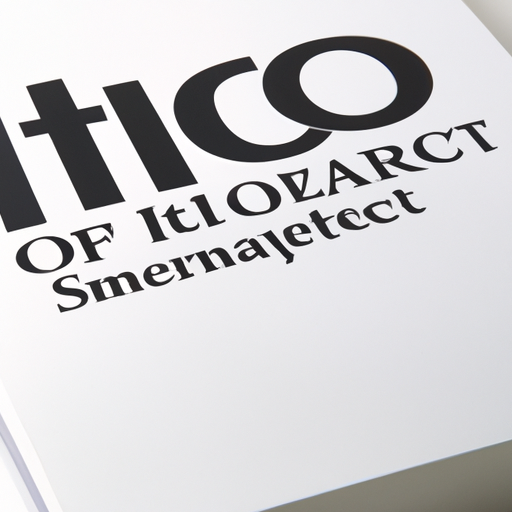The latest IQ test specification book
The Latest IQ Test Specification Book: A Comprehensive Guide
I. Introduction
Intelligence Quotient (IQ) tests have long been a topic of fascination and debate. Defined as a measure of a person's intellectual abilities in relation to others, IQ tests serve various purposes, from educational assessments to clinical evaluations. The significance of these tests cannot be overstated, as they often influence educational placements, job opportunities, and even societal perceptions of intelligence. This blog post will delve into the latest IQ test specification book, exploring its purpose, structure, and the critical aspects of IQ testing it covers.
II. Understanding IQ Tests
A. Historical Background of IQ Testing
The origins of IQ testing can be traced back to the early 20th century, with the pioneering work of French psychologist Alfred Binet. Binet, along with his colleague Théodore Simon, developed the first standardized intelligence test in 1905, aimed at identifying students who required special educational assistance. This marked the beginning of a new era in psychological assessment, leading to the development of various IQ tests over the decades.
Key figures in the evolution of IQ testing include Lewis Terman, who adapted Binet's test for American children, creating the Stanford-Binet Intelligence Scale. This test introduced the concept of the intelligence quotient, calculated by dividing a person's mental age by their chronological age and multiplying by 100. Over the years, numerous tests have emerged, each with its unique focus and methodology.
B. Types of IQ Tests
IQ tests can be broadly categorized into standardized and non-standardized tests. Standardized tests, such as the Wechsler Adult Intelligence Scale (WAIS) and the Stanford-Binet test, are administered under controlled conditions and have established norms for comparison. Non-standardized tests, on the other hand, may vary in administration and scoring, often lacking a robust normative framework.
Additionally, IQ tests can be classified as group or individual tests. Group tests, like the Otis-Lennon School Ability Test, are designed for large populations and can be administered to multiple individuals simultaneously. Individual tests, such as the WAIS, require one-on-one administration, allowing for a more personalized assessment.
C. Components of IQ Tests
IQ tests typically assess various cognitive abilities, including:
1. **Verbal Reasoning**: This component evaluates language skills, comprehension, and verbal problem-solving abilities.
2. **Mathematical Reasoning**: This assesses numerical problem-solving and mathematical understanding.
3. **Spatial Reasoning**: This measures the ability to visualize and manipulate objects in space.
4. **Memory and Processing Speed**: This evaluates short-term memory and the speed at which information is processed.
These components work together to provide a comprehensive picture of an individual's cognitive abilities.
III. The Structure of the Specification Book
A. Overview of Chapters and Sections
The latest IQ test specification book is meticulously organized into chapters and sections, each addressing a specific aspect of IQ testing. This structure allows readers to navigate the content easily, whether they are researchers, educators, or practitioners in the field.
B. Key Features of the Book
One of the standout features of the specification book is its detailed guidelines on test design and development. It outlines the essential steps involved in creating an IQ test, from defining constructs and objectives to item writing and selection. The book also emphasizes the importance of norming and standardization processes, ensuring that tests are reliable and valid.
Additionally, the book includes sections on scoring and interpreting results, providing practitioners with the tools they need to make informed decisions based on test outcomes. Sample questions and practice tests are also included, allowing readers to familiarize themselves with the types of items they may encounter in actual assessments.
IV. Test Development and Validation
A. Steps in Creating an IQ Test
Creating a reliable and valid IQ test involves several critical steps:
1. **Defining Constructs and Objectives**: Test developers must clearly define what they intend to measure and the objectives of the test.
2. **Item Writing and Selection**: This involves creating test items that accurately reflect the constructs being measured and selecting the best items for inclusion in the final test.
3. **Pilot Testing and Feedback**: Before a test can be widely administered, it must undergo pilot testing to gather feedback and make necessary adjustments.
B. Importance of Reliability and Validity
Reliability and validity are cornerstones of effective IQ testing. Reliability refers to the consistency of test results over time, while validity assesses whether a test measures what it claims to measure. There are several types of validity, including:
Content Validity: Ensures that the test covers the relevant content area.
Construct Validity: Assesses whether the test accurately measures the theoretical construct it is intended to measure.
Criterion Validity: Evaluates how well the test correlates with other established measures of the same construct.
Methods for assessing reliability include test-retest reliability, inter-rater reliability, and internal consistency measures.
V. Ethical Considerations in IQ Testing
A. Cultural and Socioeconomic Factors
One of the most pressing ethical considerations in IQ testing is the impact of cultural and socioeconomic factors on test performance. Tests must be designed to minimize bias and ensure fairness across diverse populations. This includes considering language differences, cultural norms, and educational opportunities that may affect test outcomes.
B. Issues of Bias and Fairness
Bias in IQ testing can lead to misinterpretation of an individual's abilities and perpetuate stereotypes. It is crucial for test developers to conduct thorough research and validation studies to identify and mitigate potential biases in their assessments.
C. Guidelines for Ethical Testing Practices
The specification book provides guidelines for ethical testing practices, emphasizing the importance of informed consent, confidentiality, and the responsible use of test results. Practitioners are encouraged to approach testing with sensitivity and awareness of the broader social implications.
VI. Applications of IQ Testing
A. Educational Settings
In educational contexts, IQ tests play a vital role in identifying gifted students and determining appropriate placements for special education. These assessments help educators tailor their approaches to meet the diverse needs of their students.
B. Clinical Settings
In clinical settings, IQ tests are used to assess cognitive impairments and conduct neuropsychological evaluations. These assessments can provide valuable insights into an individual's cognitive functioning and inform treatment plans.
C. Occupational Settings
In the workplace, IQ tests are often employed for employee selection and training, as well as career counseling. Organizations use these assessments to identify candidates with the cognitive abilities necessary for specific roles and to support employee development.
VII. Future Trends in IQ Testing
A. Technological Advancements
The landscape of IQ testing is evolving, with technological advancements paving the way for new testing methods. Online testing platforms are becoming increasingly popular, allowing for more accessible and efficient assessments. Additionally, artificial intelligence and machine learning are being integrated into test development, enhancing the precision and adaptability of assessments.
B. Evolving Theories of Intelligence
As our understanding of intelligence continues to evolve, so too do the theories that underpin IQ testing. Concepts such as multiple intelligences and emotional intelligence are gaining traction, prompting a reevaluation of how we define and measure intelligence.
C. The Role of Continuous Research and Adaptation
Ongoing research is essential for the continued relevance and effectiveness of IQ testing. As societal norms and educational practices change, so must the tests we use to assess intelligence. The specification book emphasizes the importance of continuous adaptation and innovation in the field.
VIII. Conclusion
In summary, the latest IQ test specification book serves as a comprehensive resource for understanding the complexities of IQ testing. From its historical roots to contemporary applications and future trends, the book provides valuable insights for researchers, educators, and practitioners alike. Staying informed about the developments in IQ testing is crucial, as it not only impacts individual assessments but also shapes our broader understanding of intelligence. For those interested in delving deeper into this fascinating topic, the specification book offers a wealth of information and encourages further exploration.
IX. References
A comprehensive list of academic sources and literature on IQ testing, along with suggested further reading materials, can be found in the specification book. These resources provide additional context and depth for those looking to expand their knowledge in this important field.















